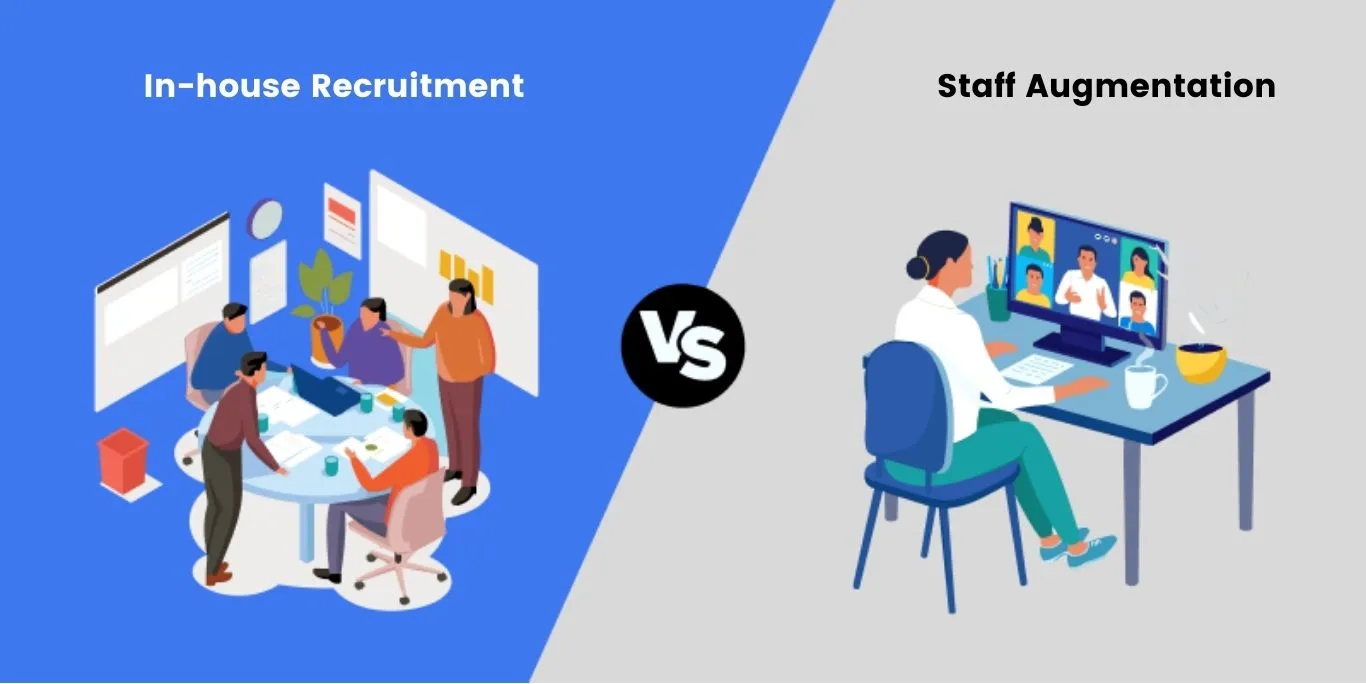Outsourcing to Czechia

How much does it cost to hire developers in Czechia?
Dec 2nd 25 - by Devico Team
Find out how much it costs to hire software developers in Czechia in 2025. Compare hourly rates, roles, and factors that impact pricing.
Hire
Hire by role
Hire Front-end developers
Hire Back-end developers
Hire Full-stack developers
Hire Android developers
Hire iOS developers
Hire Mobile developers
Hire AI engineers
Hire ML engineers
Hire Automation QA engineers
Hire Blockchain developers
Hire Data engineers
Hire Cloud engineers
Hire by skill
Hire JavaScript developers
Hire TypeScript developers
Hire Ruby on Rails developers
Hire React Native developers
Hire Flutter developers
Hire Golang developers
Hire React.js developers
Hire Python developers
Hire PHP developers
Hire .NET developers
Hire Java developers
Hire Laravel developers

Staff augmentation
December 28, 2023 - by Devico Team
Summarize with:
The demand for digital transformation has outpaced the availability of IT specialists, leaving many companies at a disadvantage. Tech talent shortages and rising hiring expenses pose major hurdles, particularly for smaller and emerging businesses.
The average cost per hire is about $4,700, while the total cost to hire a new employee can sometimes be three times the position's salary.
How can this challenge be addressed? Many business owners consider staff augmentation services, which offer numerous benefits. Still, there are a lot of those who opt for traditional hiring.
While many factors influence the final decision, cost is definitely the most important one. Therefore, let’s shed some light on the costs associated with both staff augmentation and traditional hiring.
In-house IT recruitment follows a well-established path: internal recruiters are responsible for gathering requirements, promoting vacancies, screening applicants, and conducting interviews.
Once suitable candidates are selected, they are formally employed with compensation and benefits, and the company becomes bound by employment contracts and local labor regulations.

In-house recruitment would not be so popular unless it had significant advantages. Let’s take a look at some of them.
Efficient communication. Working in an office gives teams the advantage of in-person communication, usually faster and clearer than relying on chat messages, video calls, or phone conversations.
Team building and corporate spirit. Businesses view in-house staff as their core team, supporting them through strong corporate values and engagement programs.
Better security. In-house employees rely on corporate hardware and software, reducing specific security risks. This setup also allows companies to monitor activity more effectively and verify compliance with mandatory security policies.
Tribe knowledge. In-house recruiters, as part of the team, understand which profiles align best. Their knowledge of company policies, objectives, and team culture enables them to identify highly suitable candidates.
Staff automation is a modern staffing strategy that has proved itself to be efficient and has been widely used today, especially in the IT industry. Such giants as Google, IBM, and Amazon use staff augmentation to increase their capability. Microsoft attracts the top 5% of cloud specialists globally, enabling the company to maintain its leadership in the cloud computing space.
Other domains where IT staff augmentation is most widely used are healthcare, finance, and technology.

Staff augmentation is a form of outsourcing in which external specialists are hired on a temporary basis to perform specific tasks. This approach allows companies to fill short-term roles and meet defined business objectives.
Companies bring in external professionals through a staff augmentation partner to fill temporary roles and complete targeted tasks. The staff augmentation company then screens its available talent or recruits locally, ensuring that the selected candidates align with the company’s needs.
Picture an in-house QA team made up of manual testers. With growth ahead, they suddenly need automation, but bringing on a full-time automation QA engineer doesn’t make sense for a one-time project.
Staff augmentation solves the problem: a vendor can quickly supply a performance testing specialist who builds scripts, executes tests, and delivers actionable results. This model lets you plug skill gaps, enhance your team’s capabilities, and scale when needed.
Easy hiring process. Staff augmentation streamlines hiring. You provide a staff augmentation vendor with project details and requirements, and they supply suitable talent. This saves time for internal recruiters and, for startups without HR resources, eliminates the need to manage the process in-house.
Time-efficiency. Vendors offering staff augmentation have access to large talent pools, allowing them to deliver qualified candidates almost immediately. Even when niche expertise is needed, their recruiters and efficient workflows make it possible to secure the right specialist quickly.
High flexibility and scalability. Workloads on projects often fluctuate. If demand suddenly increases, staff augmentation allows companies to scale their teams quickly. And once the need passes, external specialists can be released without the constraints of long-term contracts or labor law obligations.
Fewer hassles. Staff augmentation removes the need to manage employment-related processes. Administrative tasks, legal compliance, and organizational formalities are all managed by the staff augmentation vendor, allowing companies to focus on core business priorities.
Cost saving. The cost of staff augmentation is typically lower than that of employing in-house staff. Key factors influencing the pricing model include vendor rates and the scope of assigned tasks. More details will be discussed in the next section.
When weighing staff augmentation against in-house hiring, cost is often the deciding factor. Companies usually base their choice on available budgets and anticipated expenses. Staff augmentation pricing model tends to be the more budget-friendly approach.
Job advertisements
HR managers’ wages
Recruitment agency fees
Costs associated with participation in career fairs
Access to professional hiring platforms and job boards
Background checks
Time costs
Recruitment is a costly process, with the average expense of hiring an IT specialist ranging from $3,500 to $4,000 of both direct and indirect costs.
Another drawback of in-house recruitment is time: filling a position typically takes around two months.
Staff augmentation avoids this delay. Provide your staff augmentation partner with requirements, and they’ll quickly deliver candidate profiles that fit.
Onboarding costs for in-house employees vs staff augmentation
Equipment procurement and setup
Workspace maintenance
Office supplies
Hiring the right people is only the beginning. To keep them productive, you need to provide proper working conditions. Add to that the costs of equipment, software, and tools, and the investment extends well beyond salaries.
Again, when it comes to staff augmentation, you may not concern yourself with what hardware and software you need to have in place. Augmented staff work remotely, and a staff augmentation company provides them with everything they need to work on your project. All you need to do is introduce new hires to your in-house team, provide them with instructions, and grant access to systems and documents they need to use while working on your project.
Ongoing costs: In-house employees vs. Staff augmentation
Office rental
Software licensing fees
Taxes
Wages
Maternity leave
Sick leave
Vacation leave
Overheads represent a significant difference between in-house teams and staff augmentation. Maintaining an internal workforce involves recurring expenses such as office rent, taxes, wages, and various types of leave. These costs add up substantially each year.
With staff augmentation, by contrast, you pay a monthly service fee outlined in your contract, which already includes commission of the the staff augmentation partner you choose.
The total amount is typically much lower than the annual cost of supporting each in-house employee, particularly when working with offshore providers.
Staff retention costs: In-house employees vs. Staff augmentation
Bonuses
Health insurance
Training courses
Team-building activities
Catering
Recreation/sports vouchers, etc.
These days, seasoned IT specialists are rather demanding. Companies have to spend a fortune to keep them engaged - employee benefits accounted for 29.4% of total compensation for private industry workers.
Apart from high salaries, they expect to get numerous fringe benefits like health insurance or 401(k) matching contributions (often 3% to 6% of an employee's salary). So if you want to attract brilliant talent and retain them, be ready for significant expenses.
As to staff augmentation, again, your staff augmentation company takes care of all this stuff while you just receive the services that you currently need to achieve your goals.
Of course, cost matters, and staff augmentation frequently comes out ahead. Still, finances are only one piece of the puzzle. To make the most of this model, it’s equally important to look at other decisive factors, including the staff augmentation challenges you need to overcome.
Weighing the pros and cons of staff augmentation and in-house hiring becomes easier when focusing on practical use cases that reveal when staff augmentation or in-house hiring delivers the greatest value.
In-house recruitment is the best choice for those who find themselves in the following situations:
Skill set improvement is needed on a long-term basis.
There are professional in-house recruiters who can cope with all hiring activities.
Your budget lets you maintain an extensive in-house team.
You are not time-constrained and can afford to seek talent for as long as needed.
Your company can offer a competitive salary and fringe benefits to attract potential candidates and retain them.
Your company is interested in having its own talent pool.
A lot of companies may come to the conclusion that staff augmentation is more advantageous for them, especially when it comes to the following use cases:
You have recently set up your business and don’t have the opportunity to maintain extensive in-house teams.
You don’t have an in-house recruitment team and would like to avoid the possible fatal errors of hiring the wrong people.
You need to engage a specialist as quickly as possible and on an interim basis.
You are on a tight budget and can’t handle the expenses on benefits, taxes, equipment procurement, and other stuff needed for maintaining a large in-house team.
You are ready to put extra effort into managing remote team members.
Cost often becomes a deciding factor when comparing staffing strategies. In this respect, staff augmentation has a clear advantage. Unlike in-house hiring, it avoids high expenses related to recruitment, onboarding, ongoing employment, and staff retention.
It also allows companies to access skilled talent for a defined period at a lower cost. Even so, there is no universal solution. Each company must carefully analyze its project requirements and internal capacity before deciding on the most suitable approach.
Outsourcing to Czechia

Dec 2nd 25 - by Devico Team
Find out how much it costs to hire software developers in Czechia in 2025. Compare hourly rates, roles, and factors that impact pricing.
Outsourcing to Czechia

Nov 25th 25 - by Devico Team
Compare Czechia and Poland for software outsourcing in 2025. Discover costs, talent, infrastructure, and which country fits your project best.
Outsourcing to Czechia

Nov 18th 25 - by Devico Team
A complete guide to outsourcing software projects to Czechia, learn about costs, talent, benefits, and how to build successful partnerships in 2025.